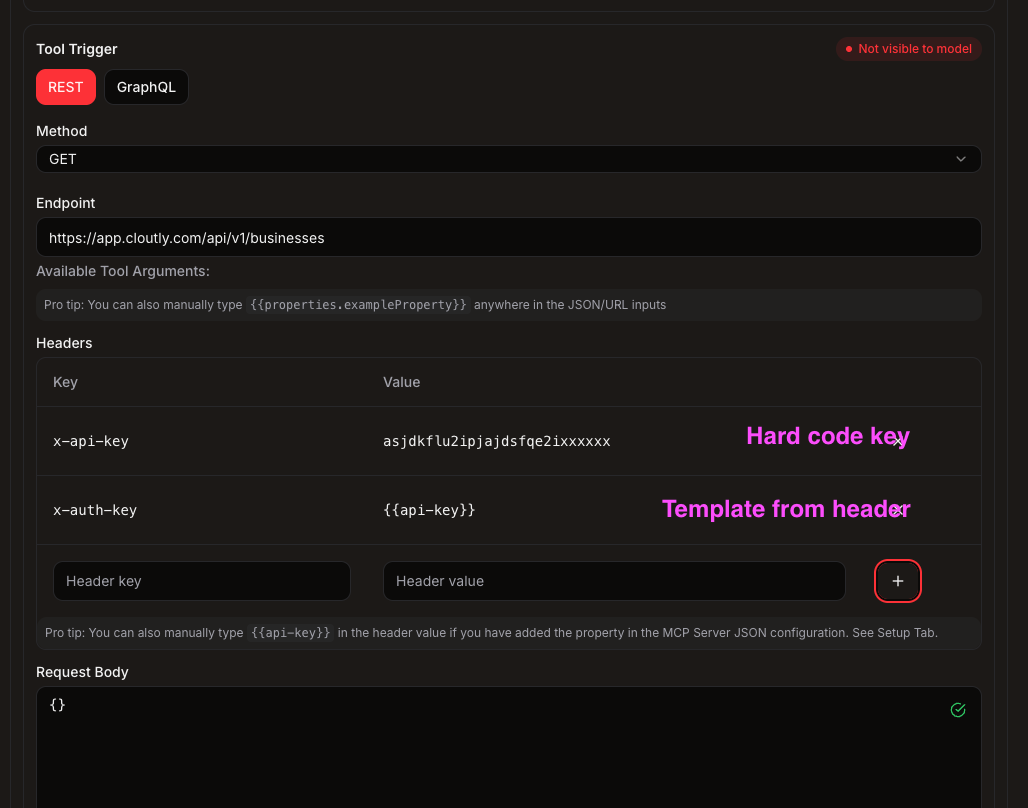Advanced examples
MCP Server Authentication
MCP Server Authentication
Configure authentication for your Rapid MCP server
Overview
Rapid MCP supports authentication via HTTP headers. You can:
- Set headers at the MCP server level (recommended). These are automatically passed to each tool call.
- Reference those headers inside a tool's Headers section using template variables like
{{api-key}}.
OAuth is planned and coming soon.
1) MCP server-level headers (API key)
Add an API key at the server level so it is forwarded to every tool call:
{
"mcpServers": {
"RapidMCP": {
"url": "https://rapid-mcp.com/mcp/<serverId>/stream",
"headers": {
"Authorization": "Bearer XXXXX",
"api-key": "example-api-key"
}
}
}
}Notes:
- Keys in
headersare exposed to tools as template variables. For example,api-key→{{api-key}}. - Keep header keys lowercase and without spaces for clean templating.
2) Tool-level headers using {{api-key}}
Inside a tool, add headers that reference the server-level API key:
Authorization: Bearer {{api-key}}
x-api-key: {{api-key}}Add these in the tool editor under "Headers".

Tip: You can hardcode tokens per tool, but managing them at the server level makes rotation and reuse across tools easier.
3) OAuth (coming soon)
We are adding first-class OAuth support. Planned flow:
- Configure OAuth client credentials at the server level
- Complete authorization once to securely store tokens
- Tokens automatically injected as request headers for tool calls
This section will be updated when available.